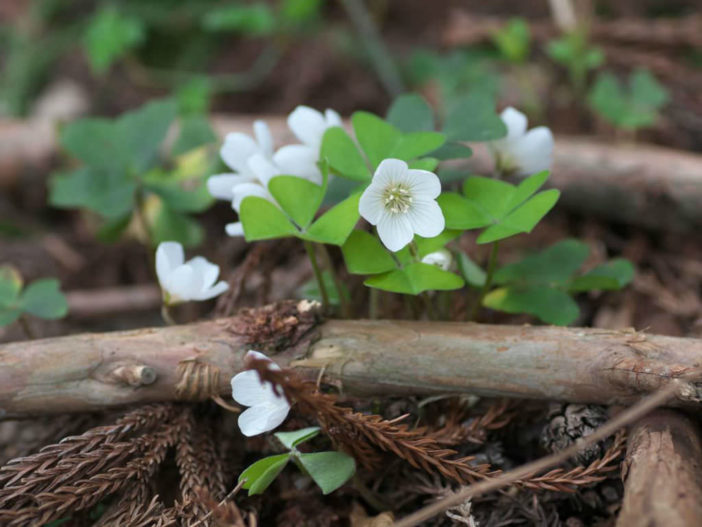Scientific Name
Oxalis griffithii Edgew. & Hook. f.
Synonym(s)
Oxalis acetosella subsp. griffithii, Oxalis hupehensis, Oxalis japonica, Oxalis leucolepis var. griffithii
Scientific Classification
Family: Oxalidaceae
Genus: Oxalis
Flower
Color: White and red
Bloom Time: Summer
Description
Oxalis griffithii is a perennial plant with rough-textured green leaves and up-facing white flowers. It grows up to 10 inches (25 cm) tall and creeps underground via rhizomes, eventually forming attractive mats in the shade garden. Leaves are shamrock-like and up to 5 inches (12.5 cm) long.

Hardiness
USDA hardiness zone 6a to 9b: from −10 °F (−23.3 °C) to 30 °F (−1.1 °C).
How to Grow and Care
Oxalis can be grown indoors as a houseplant or outdoors in the garden. They from the garden center are generally available in the fall or early spring.
These plants need bright indirect light to grow well and produce flowers. Oxalis can often bloom all winter if kept in a sunny spot. Keep the soil moist but never soggy. Allow the top 2 inches (5 cm) of soil to dry out before watering. It is best to water an Oxalis from the bottom so that the thin, fragile stems of the plant don't get waterlogged, and the soil stays loose. Oxalis grows best in cool temperatures between 60 to 70 ºF (15 to 21 ºC) during the day and 55 to 65 ºF (13 to 18 ºC) at night. The soil should be loose and sandy rather than rich and organic. Feed monthly in the spring and summer when actively growing with a basic houseplant food at ½ the recommended strength. Never feed an Oxalis when it is dormant and the bulbs are resting.
The Oxalis doesn't need a big container as it is rather dense and compact for its size. So the original potting will be easy, and repotting after that won't have to be done too much unless you want to change the pot for looks.
See more at How to Grow and Care for Oxalis.
Origin
This species is native to the thickets and meadows of Bhutan, China, India, and Japan.
Links
- Back to genus Oxalis
- Plantpedia: Browse flowering plants by Scientific Name, Common Name, Genus, Family, USDA Hardiness Zone, or Origin
Photo Gallery
Click on a photo to see a larger version.




